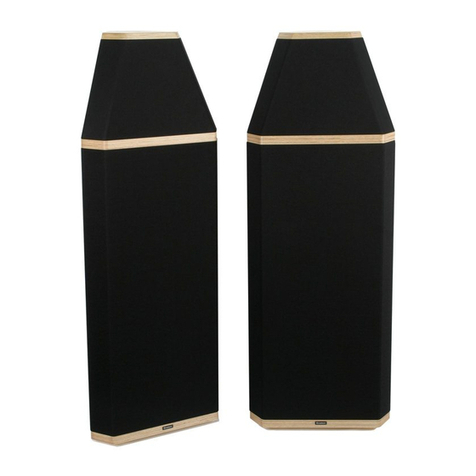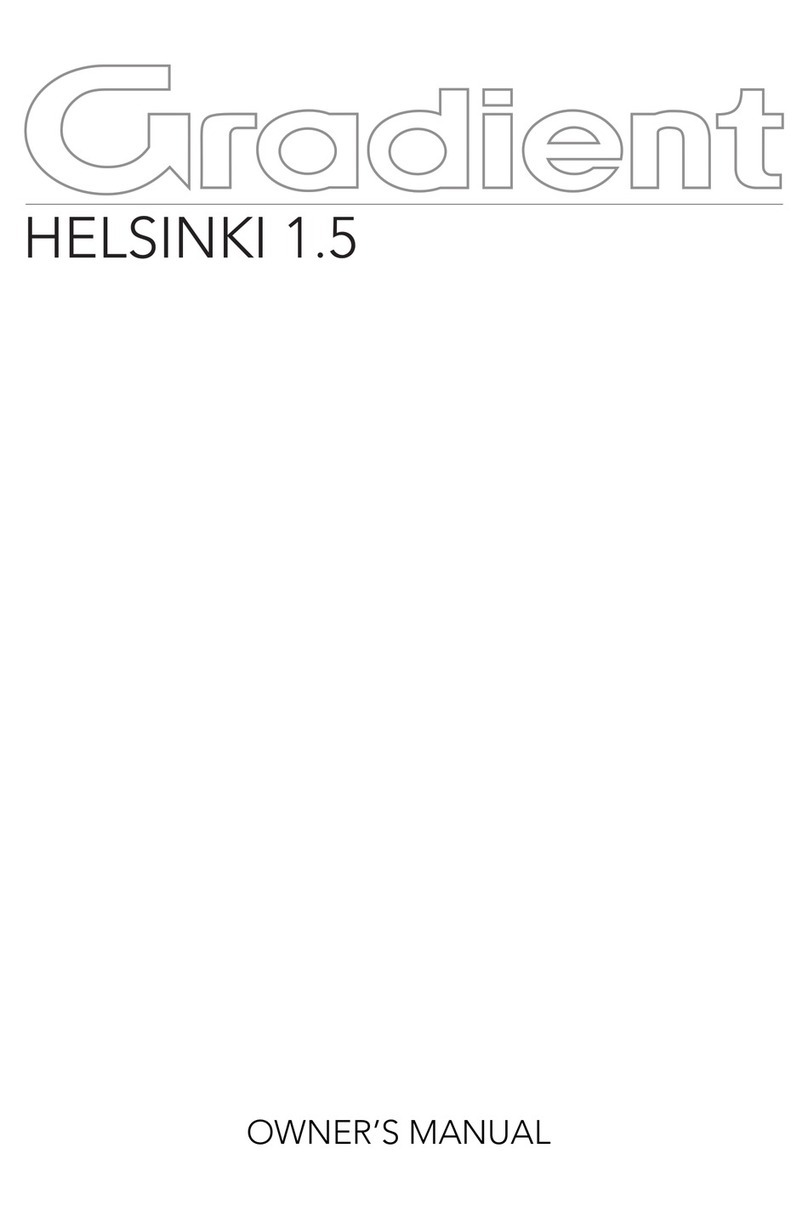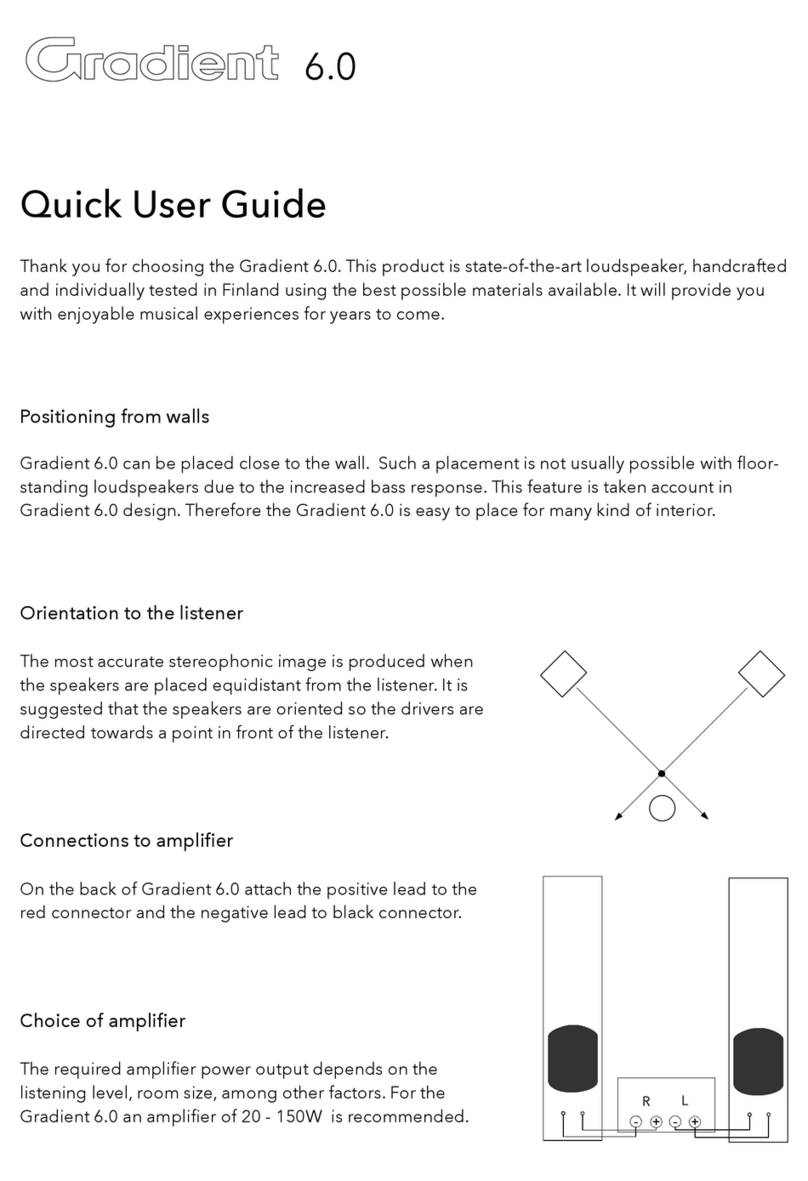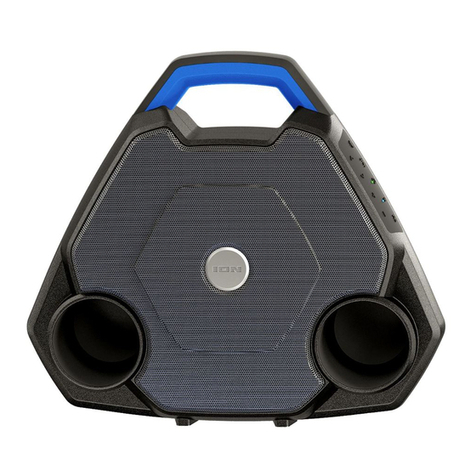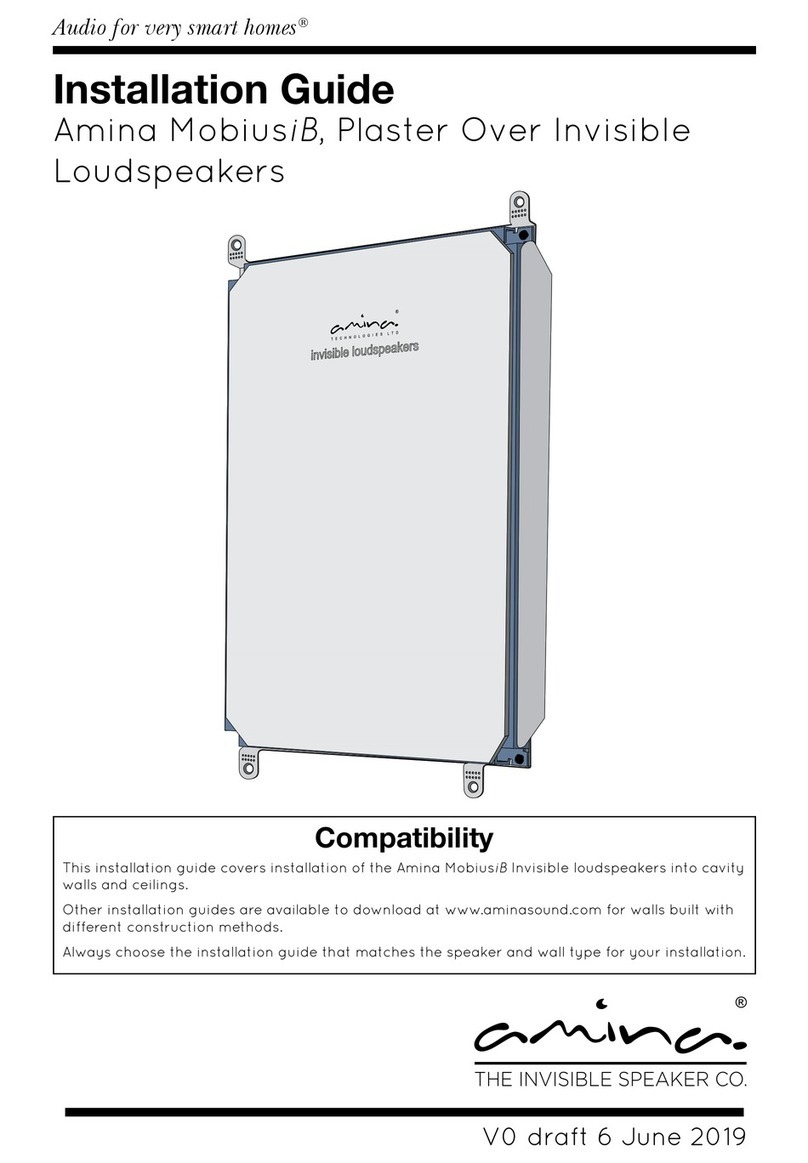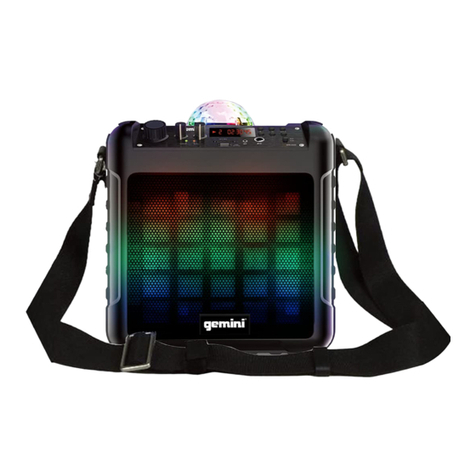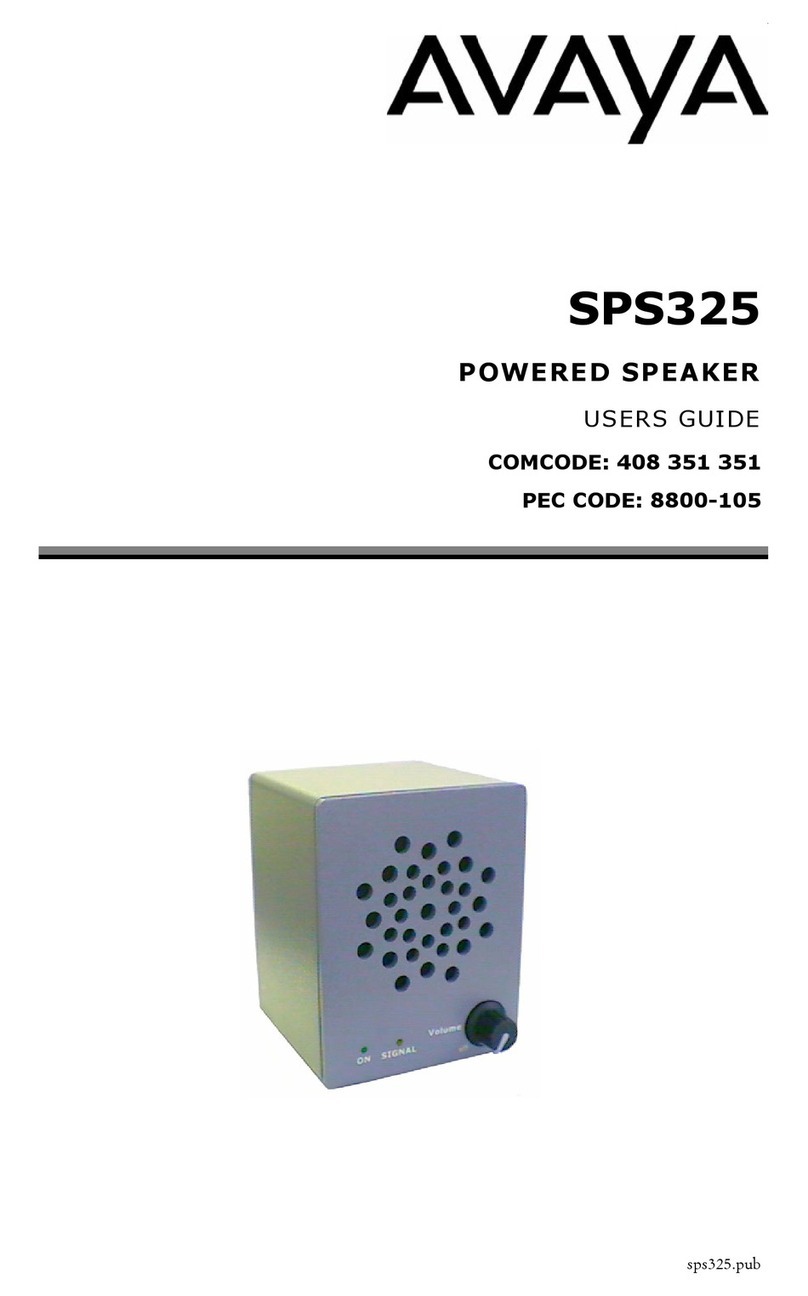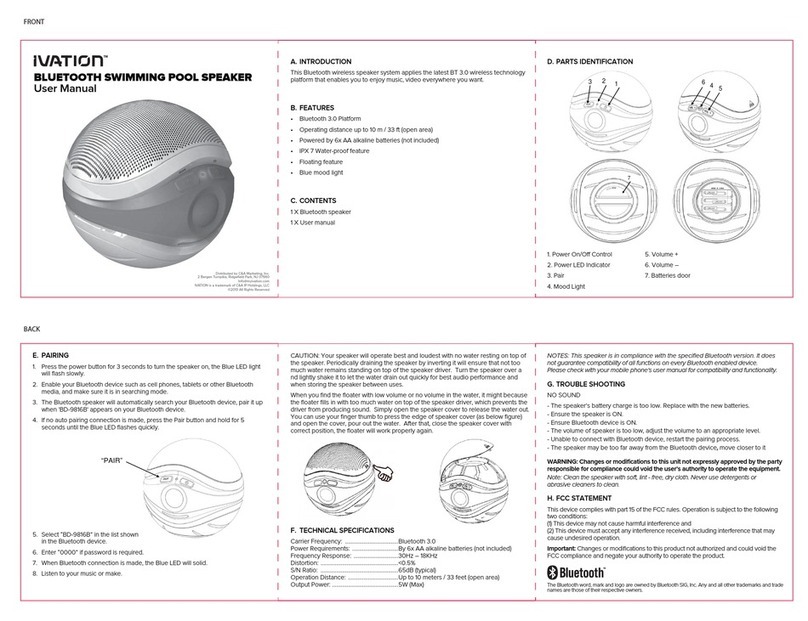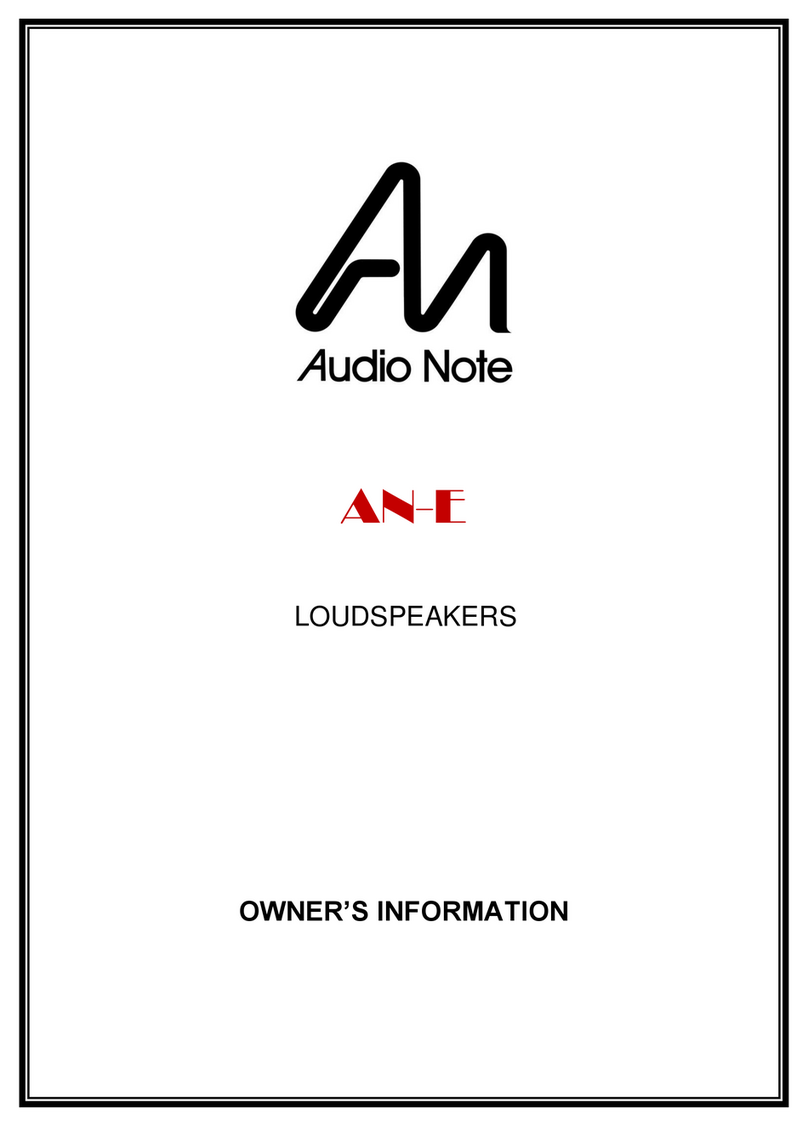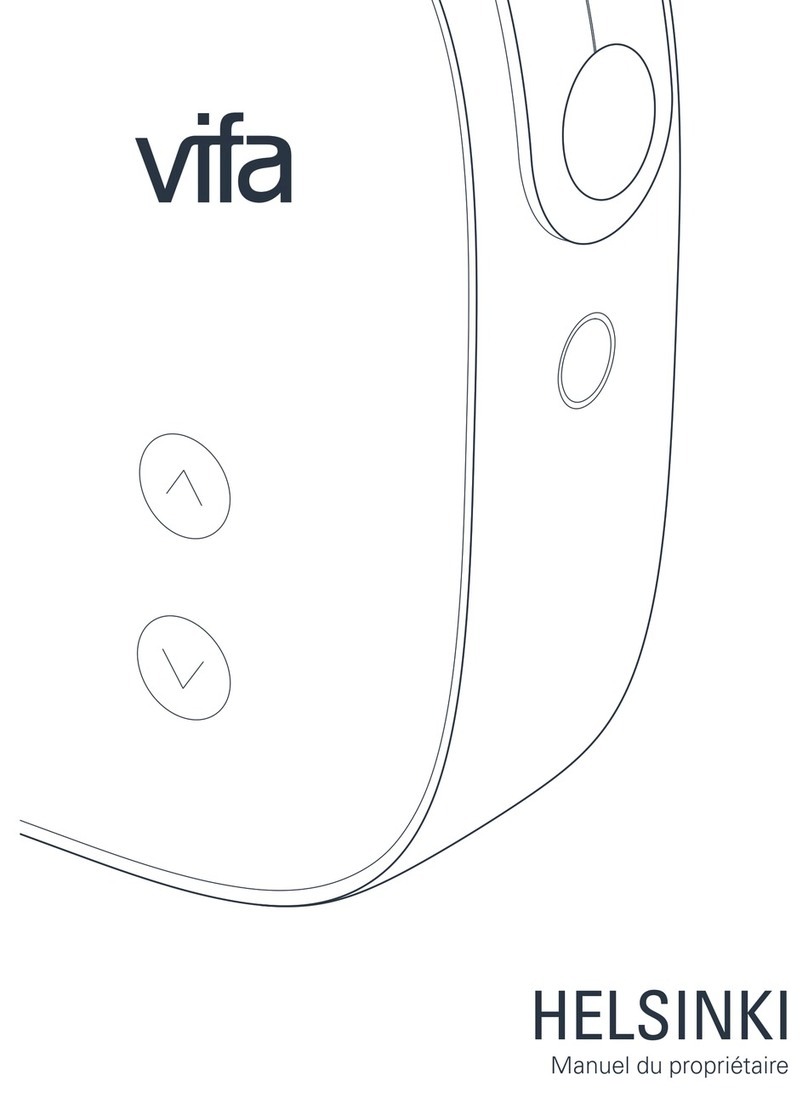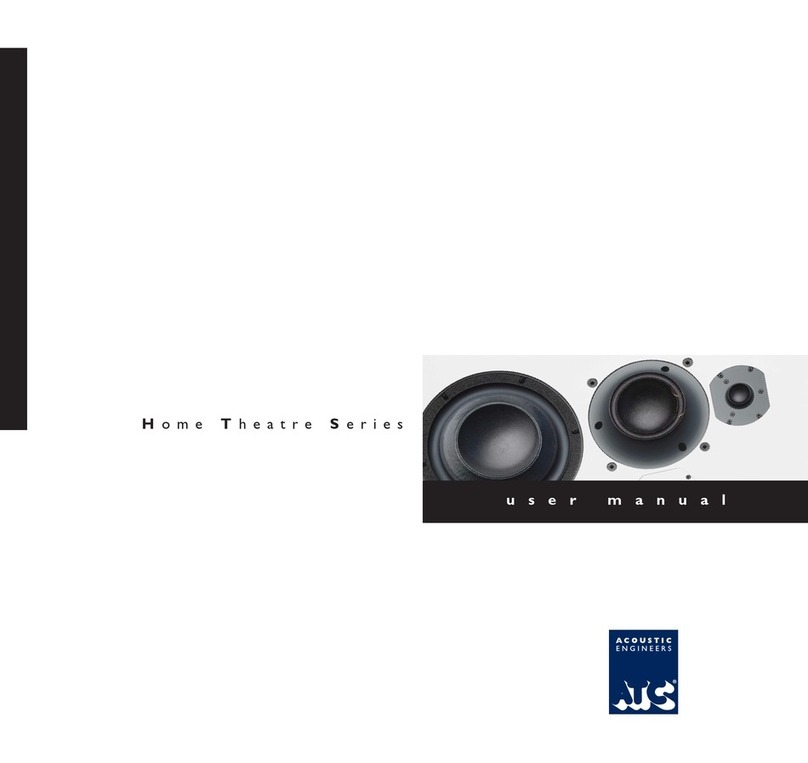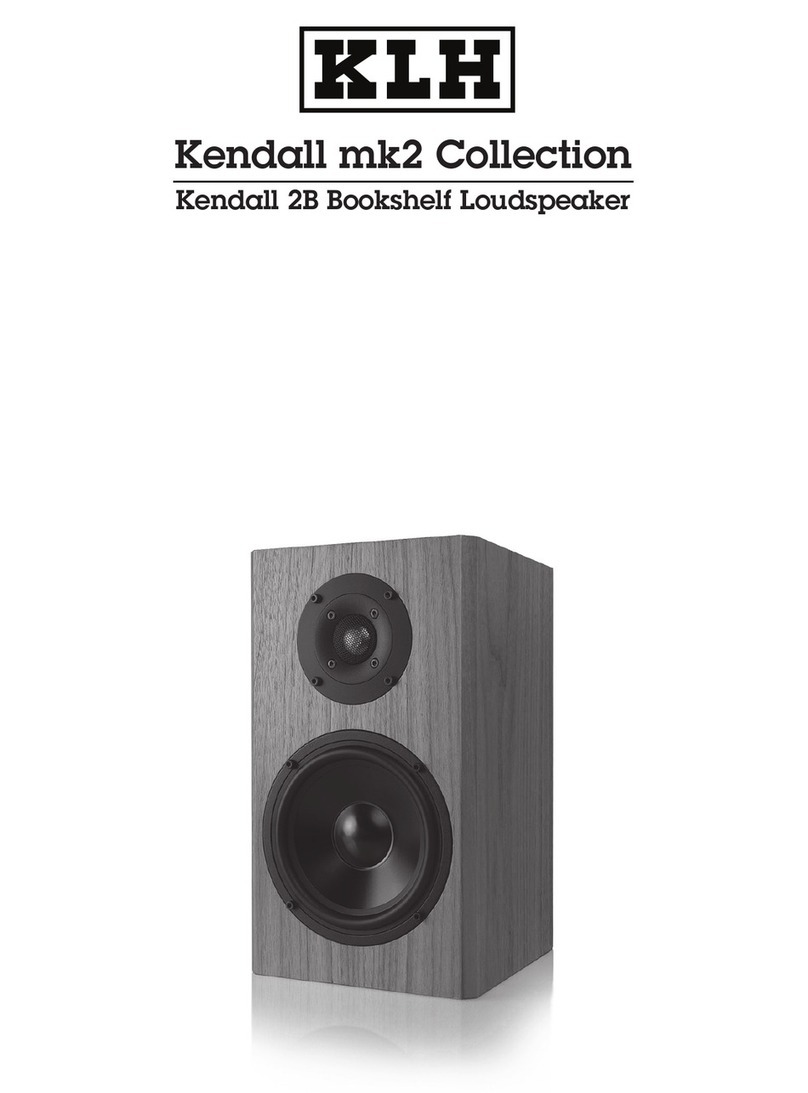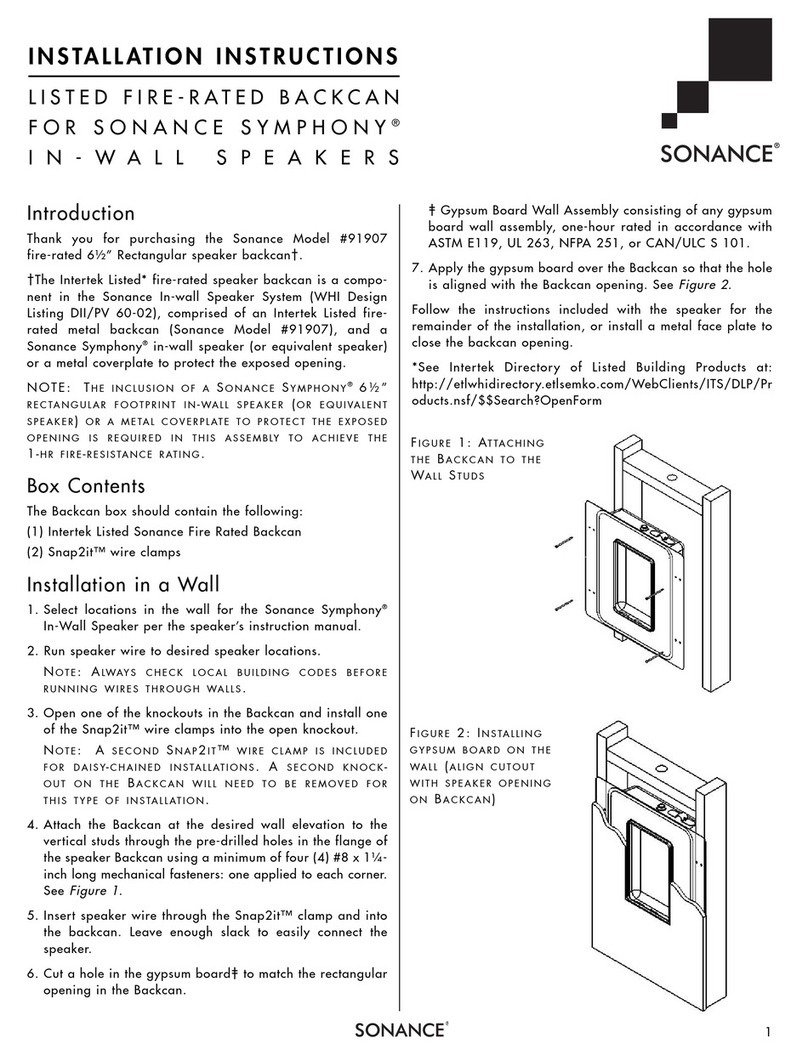Gradient R-5A User manual

R-5A
USER GUIDE


Congratulations on your purchase of the Gradient R-5A
loudspeakers which represent the latest in loudspeaker
technology. The Gradient R-5A speaker is handcrafted and
individually tested in Finland using the best possible materials
available. It will provide you with enjoyable musical experiences
for years to come.
We recommend you to read this manual entirely to fully utilize
the high performance capacity of your speakers.
GRADIENT R-5A
3

INSTALLATION
Carefully remove the loudspeakers from their packaging boxes
on the floor, on a soft surface such as a carpet. First, connect
the Gradient XO-AMP unit to the other audio equipment
according to separate instructions coming with the XO-AMP
unit.
· attaching the feet
Attach the special rubber feet (3pcs / speaker) to the base of
the bottom part of the speaker.
· connecting the loudspeaker cable
For fast, easy and high quality connecting, Gradient R-5A is
equipped with a professional four-pole speakON connector
and cable housing. If you are not using dedicated Gradient
cables, a speakON cable connector has to be connected to
your cables. In that case follow instructions attached to the
packing to prepare cables.
The speaker connector is located on the base of the bottom
part of the speaker, from where the speaker cable can be
routed freely in the desired direction. Connect the speaker
cable to the to the speaker before assembling the top part.
The speakON connector comes with a twist and lock feature.
Press the cable connector into the connector on the bottom of
the speaker and twist. The connector locks and establish a
secure connection.
4

· assembling the top part of the speaker
Before assembling the top part it is good idea to find a
preliminary location for the speaker in the room and install the
bottom part of the speaker there.
While holding the top part, connect the cable connector of top
part to the XLR-connector of the bottom part. The XLR-connector
is situated inside the bottom part and is accessed through the
opening in the top plate of the bottom part. You will hear a
"click-sound" when the cable connector is locked properly.
Make sure that the cable between the top and bottom fits well
inside the bottom part. The top part should rest firmly on the
three silicone plugs. When repositioning the speaker, it is
always recommended to remove the top part of the speaker to
avoid damages.
The top part can be turned both horizontally and vertically. The
unique feature allows fine-tuning for the sonic image and room
reflections.
INSTALLATION
5

LAYOUTS FOR LISTENING
The most accurate stereophonic illusion is obtained if the
listener sits at equal distances to both loudspeakers. However
compared to standard speakers Gradient R-5A, being a point
sound source, can be listened to at a much shorter distance. In
this case the stereo stage will be wider.
The farther from the speakers the listener goes, the more room
colourations will be added to the sound. Thanks to directivity
properties of Gradient R-5A it can be listened to at much longer
distance without loosing the accuracy and spectral balance.
Standing waves have different amplitudes at different places in
the room. This means that besides the loudspeaker placement
also the positioning of the listening spot has equal importance.
Near the wall all standing wave modes are emphasized and
heard most effectively. When the listener moves towards the
centre of the room the amplitude relationships between different
frequencies will change. The lowest room mode cannot be
heard at all in the middle of the room. The best listening spot
will be found between the back wall and the centre of the
room.
A dipole loudspeaker has features that are quite unique. When
the distance between the speakers and the front wall is similar
to that of the listener and the back wall, the first reflection will
be cancelled at the listening place.
6

The Gradient R-5A speakers can be positioned in a free space
as any panel speakers. In this case it is recommendable that the
distance from the rear wall will be minimum one meter (3'). In
theory increasing the distance from the rear wall will allow the
speaker to go lower in frequency. In practice however this rule
can be oversimplified. It is always a good idea to try different
distances. Proper starting points are one meter and two meters.
The basic set-up – where midrange & treble driver is on the
same side as woofers – is a good starting point. First direct the
speakers as in the Fig. 1. Also try to turn the speakers towards
the listener step by step.
USE AS A PANEL SPEAKER
7
Fig 1. Basic set-up where the woofers of the speaker are facing
forward. The distance between the speakers and the wall
should be at least one meter. The round Gradient logo
indicates the direction of the woofers.

It is also possible to direct the bodies as in the Fig. 2. In this
case the low notes are radiated parallel to the side walls and
the midrange & treble drivers are towards the listener.
Try different distances (1m...2m) from the rear wall and turn the
speakers.
In a narrow room the speakers can be positioned even against
the side walls.
USE AS A PANEL SPEAKER
8
Fig 2. The woofers can also be directed parallel to the side
walls. If needed the side of the bottom part can be positioned
against the side wall.

The Gradient R-5A has an unique feature for a panel speaker:
it can also be positioned against the wall. The longer wall of
the room is preferable.
When used against the wall the bottom parts are directed as in
the Fig. 3. The top parts of the speaker (midrange & treble) will
be directed to the listening area.
Smoothness of the bass response depends on the distances to
the side walls and on the construction and material of the walls.
If the side walls are of similar construction the smoothest bass
response will be obtained when one speaker is twice as far from
the wall as the other speaker. For instance one meter (3') and
two meters (6') from the side walls.
AGAINST THE WALL
9
Fig 3. The loudspeakers can also be positioned against the
wall, see the location of the round Gradient logo.

If the speakers are placed too close to the side walls the lowest
notes will be attenuated.
The wall positioning gives a unique feature of adjusting the
bass level. When the speakers are taken 5cm...10cm (2''...4'') of
the wall, the bass level will be attenuated by about 2dB. It is
also possible to fine-tune the bass by rotating the bottom part
slightly (Fig. 4).
AGAINST THE WALL
10
Fig 4. For wall positioning, adjust the bass level and tone by
moving the speaker slightly off the front wall and rotating the
speaker.

The Gradient R-5A speakers can also be positioned in such a
way that one speaker is against and another will of the wall
(Fig. 5).
THE MIXED POSITIONING
11
Fig. 5. A mixed positioning where one speaker is attached to
the wall and the other to an open space.

· rotatable dipole bass
The bass part of Gradient R-5 loudspeaker consists of two
300mm custom made long throw woofers. They are assembled
on an open baffle giving the low frequencies a "figure eight" or
dipole radiation pattern similar to most panel loudspeakers.
These two woofers operate at frequencies below 200Hz.
An ordinary box speaker radiates in all directions at low
frequencies. This has the unfortunate effect of generating
standing waves in all dimensions. In the typical listening room,
standing waves distort the sound at frequencies below 200Hz.
Gradient R-5 does not excite standing waves between the floor
and the ceiling, it can only generate them in the direction of the
radiation pattern.
The woofer section of the Gradient R-5 can be rotated and
directed in many ways, to minimize undesirable standing waves
in the listening area. This ability to "tune" out standing waves in
the bass is unique. The result is a smooth articulate bass
response which has correct musical pitch and dynamics.
· acoustic resistance enclosure at mid frequencies
Frequencies higher than 200Hz are reproduced by the top part
of the speaker. It employs a coaxial midrange & treble driver
which is a virtual point source. The main unit is a 176mm reed-
paper coned driver which receives its radiation characteristics
from an acoustic resistance enclosure.
Thanks to the cardioid radiation patter the speaker radiates
frequencies over 200Hz mainly to the forward direction. The
backward radiation is dampened most effectively being in
power only one percentage of the forward radiation. Unwanted
reflections from the nearby boundaries will be minimized and
the midrange will sound clean without colourations.
A BRIEF DESCRIPTION OF TECHNOLOGIES
12

· acoustic waveguide at high frequencies
The Mg-Al dome tweeter placed at the apex of the cone uses
midrange diaphragm as a waveguide to control treble
dispersion. The resulting radiation pattern at high frequencies is
therefore very similar to that of the cardioid midrange. Of
course the tweeter is equipped with a voice coil/ magnet system
of its own.
· a point source at mid & high frequencies
A point source is generally accepted as an ideal sound source.
It enables excellent frequency response and phase properties
over a wide listening window. The result of this will be stable
and accurate stereo picture with good three dimensionality. The
quality of a recording will be easily discovered.
A BRIEF DESCRIPTION OF TECHNOLOGIES
13

· active crossover with dipole correction
The woofers of the Gradient R-5A are directly connected to the
power amplifiers at the XO-AMP unit giving the best possible
control over the cone excursion. Thanks to the active bass level
control the sensitivity of the mid driver and the tweeter can be
fully utilized.
Due to the nature of open baffle design the bass section of the
Gradient R-5A will need equalization. This is done in the XO-
AMP unit. The lower limit of the R-5A is set to reach to 20Hz,
-3dB.
· electronic bass level control
The level of the signal, feeding the bass amplifier can be
adjusted continuously by trimmer adjustments at the back of the
XO-AMP unit. The adjustment range is +/- 10dB for both
channels separately. Once found the correct balance, there is a
little need for further adjustments.
A BRIEF DESCRIPTION OF TECHNOLOGIES
18

· connecting cables to speakON cable connector
If you are not using the dedicated Gradient speaker cables,
connect the speakON cable connector to the cable as follows:
1 - = bass minus
1+ = bass plus
2 - = midrange/treble minus
2+ = midrange/treble plus
OTHER REMARKS
19

TECHNICAL SPECIFICATIONS
20
Model:
Loading principle:
Radiation patterns:
Frequency response:
Drivers:
Crossover frequencies:
Dimensions (WHD):
Weight:
Gradient R-5A
Bass:
open baffle (f<200Hz),
Midrange:
acoustic resistance enclosure
(f>200Hz)
dipole (bass), cardioid
(midrange & treble)
20-25000Hz +/-3dB
2×300mm long throw woofer,
1x176mm pre-coated reed-
paper midrange, 1x25mm
coaxial Al/Mg-dome
200Hz and 2800Hz
42 × 104 × 32cm
25kg
Designed and manufactured in Finland by
Gradient Labs Ltd.

Gradient loudspeakers are manufactured from high quality
materials and components. The performance of the drivers
used have been tested before the assembly. After the assembly
a precision measuring system ensures that all speakers are of a
similar high standard. The inspection marking and the serial
number are located at the base of the bottom part of the
speaker.
QUALITY CONTROL
21
Gradient Labs Ltd Kisällintie 8 FI-06150 Porvoo Finland
www.gradient.fi
COPYRIGHT © 2022 GRADIENT LABS. ALL RIGHTS RESERVED.



Table of contents
Other Gradient Speakers manuals
